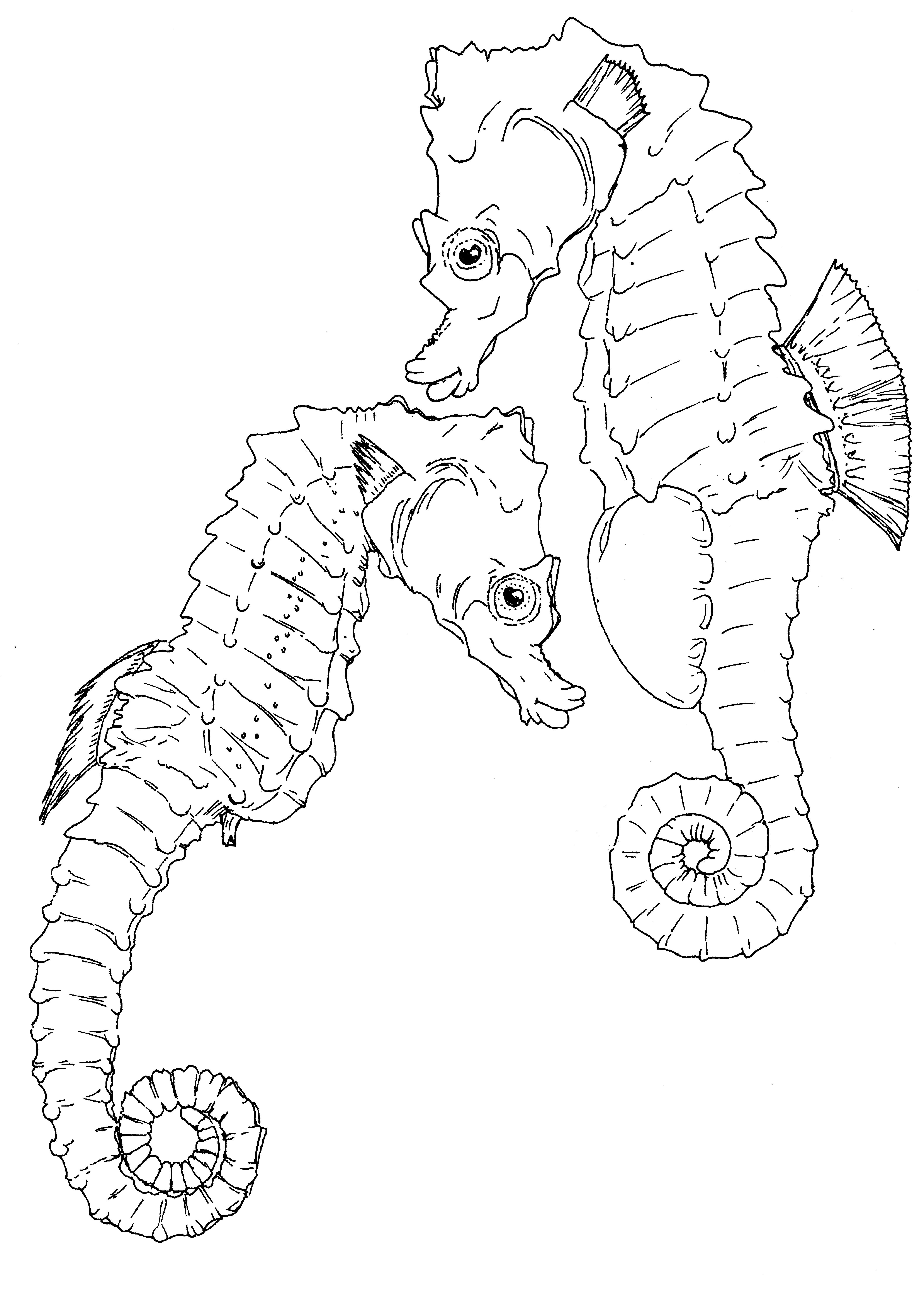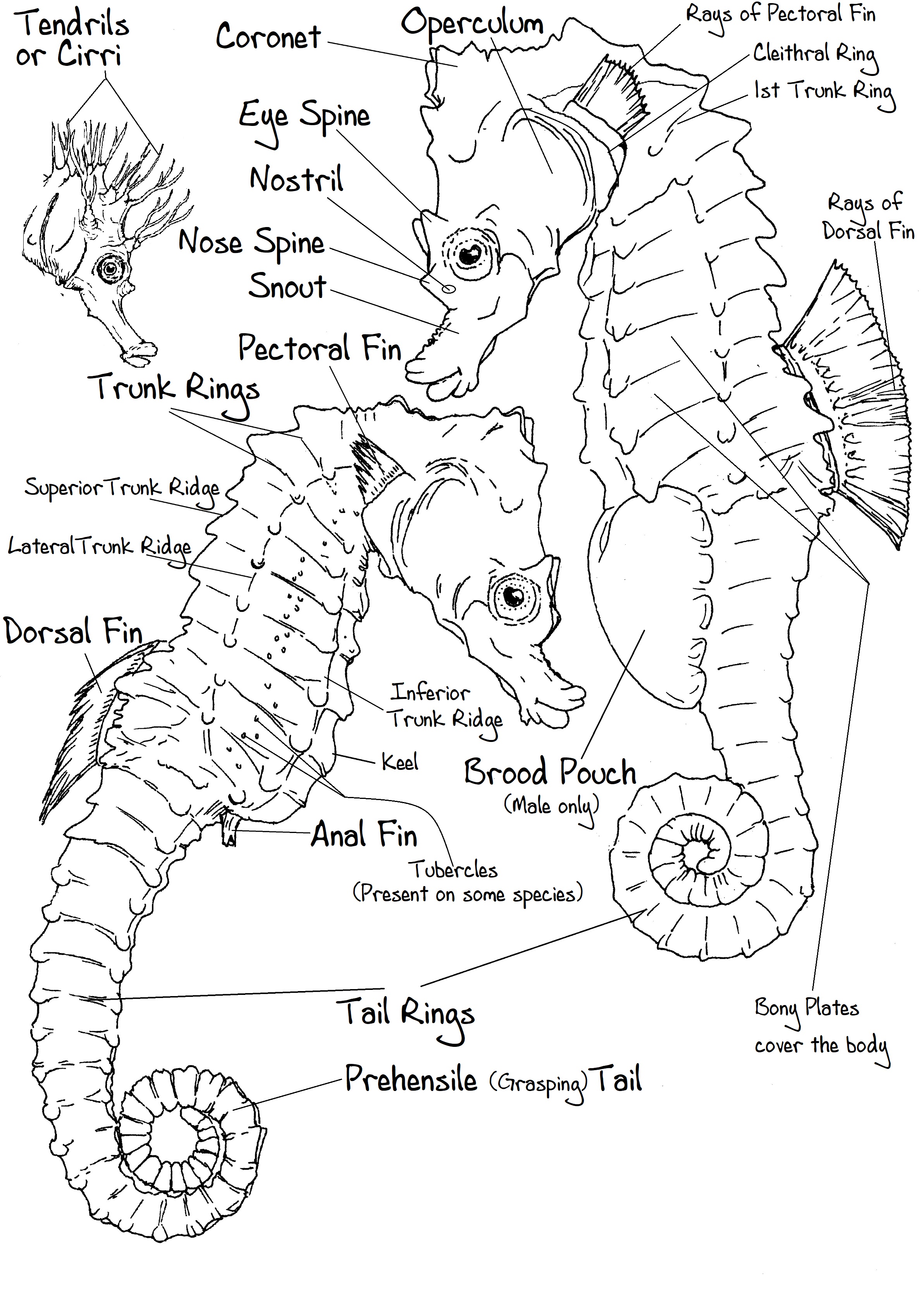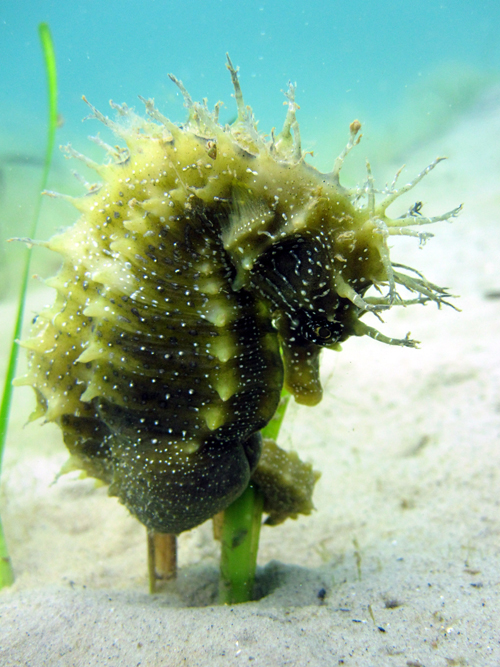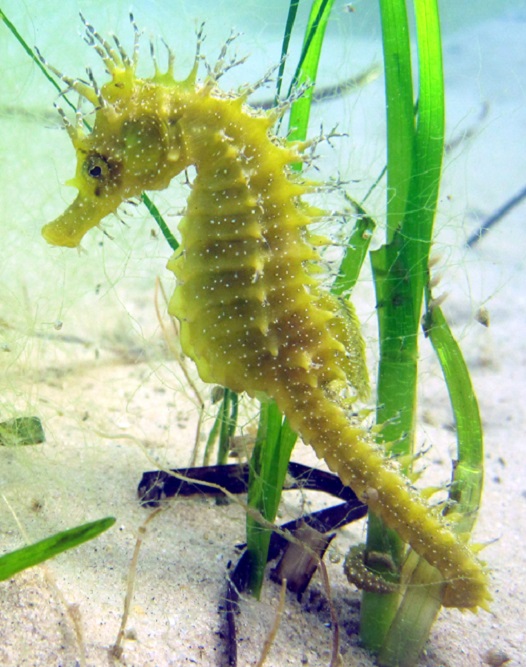Male or female?
So if the male gets pregnant and has the babies why is he the male?, the short answer to this, is he still has all the male bits and pieces. However he does have a brood pouch under the belly attached to the front of the tail in which to keep and nurture his babies (fry) in.
After the male and female undergo their morning courtship display, if he is not pregnant, then they will rise in the water column together and at the vital point they turn to face each other, the female then puts her ovipositor into the entrance of the males pouch, which is at the top.
The female deposits her eggs into him, and once full of eggs he sinks to the seabed, he then wiggles, twists and turns so that all the eggs are fertilised.
The eggs embed themselves into the lining of the pouch, where they will grow into fully formed miniature seahorses.
Depending on the species, they are born anywhere from 14 to 30 days later. Once born, they are on their own, and within 24 to 48 hours the male is pregnant again.
The female is on the left of the picture and the male on the right, with his large brood pouch below his belly.







